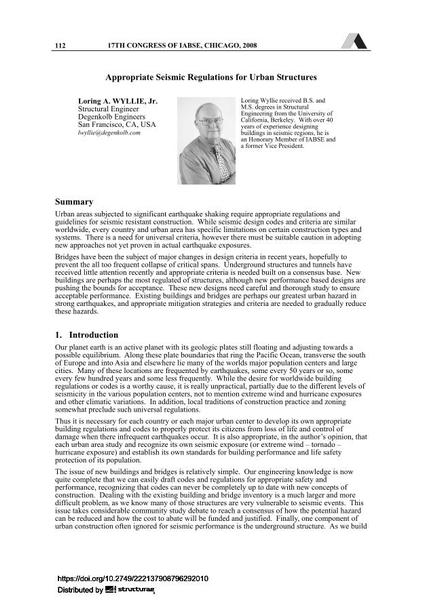Appropriate Seismic Regulations for Urban Structures

|
|
|||||||||||
Bibliographic Details
| Author(s): |
Loring A. Wyllie
(Structural Engineer, Degenkolb Engineers, San Francisco, CA, USA)
|
||||
|---|---|---|---|---|---|
| Medium: | conference paper | ||||
| Language(s): | English | ||||
| Conference: | 17th IABSE Congress: Creating and Renewing Urban Structures – Tall Buildings, Bridges and Infrastructure, Chicago, USA, 17-19 September 2008 | ||||
| Published in: | IABSE Congress Chicago 2008 | ||||
|
|||||
| Page(s): | 112-116 | ||||
| Total no. of pages: | 5 | ||||
| Year: | 2008 | ||||
| DOI: | 10.2749/222137908796292010 | ||||
| Abstract: |
Urban areas subjected to significant earthquake shaking require appropriate regulations and guidelines for seismic resistant construction. While seismic design codes and criteria are similar worldwide, every country and urban area has specific limitations on certain construction types and systems. There is a need for universal criteria, however there must be suitable caution in adopting new approaches not yet proven in actual earthquake exposures. Bridges have been the subject of major changes in design criteria in recent years, hopefully to prevent the all too frequent collapse of critical spans. Underground structures and tunnels have received little attention recently and appropriate criteria is needed built on a consensus base. New buildings are perhaps the most regulated of structures, although new performance based designs are pushing the bounds for acceptance. These new designs need careful and thorough study to ensure acceptable performance. Existing buildings and bridges are perhaps our greatest urban hazard in strong earthquakes, and appropriate mitigation strategies and criteria are needed to gradually reduce these hazards. |
||||
